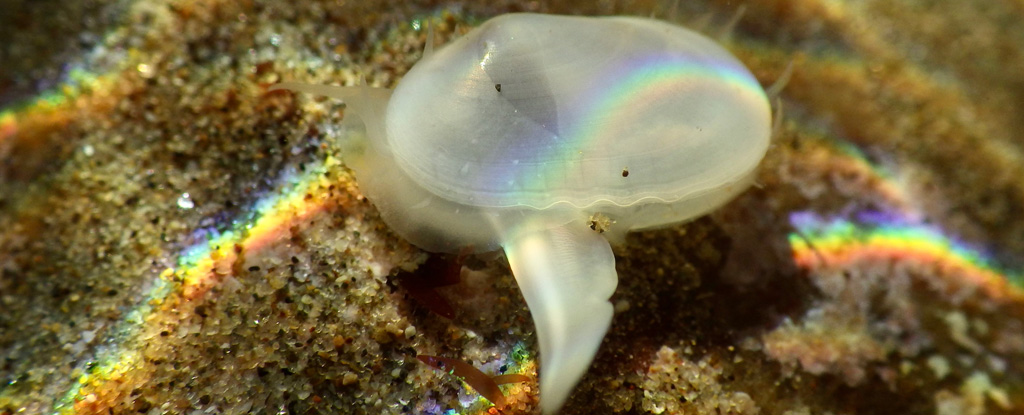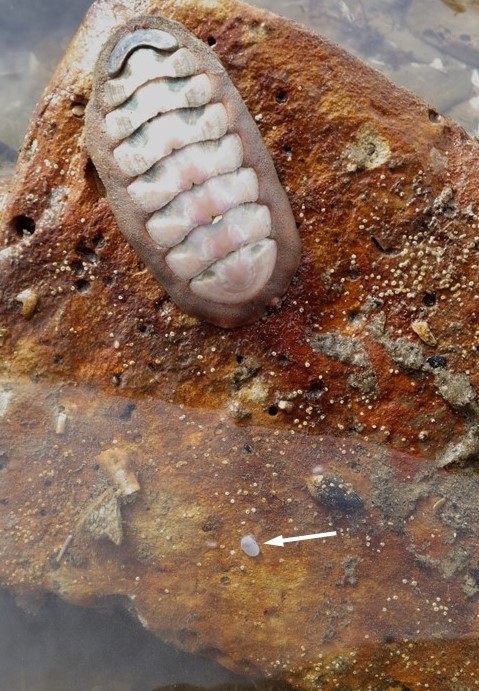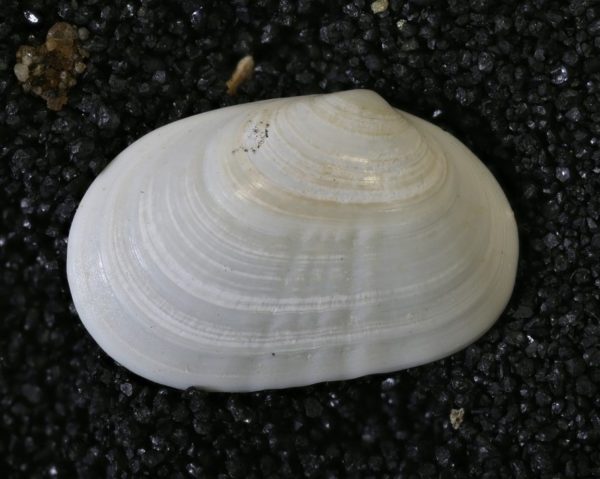
Posted on 11/18/2022 12:53:54 PM PST by Red Badger

C. cooki, measuring about 10 millimeters (0.4 inches) long. (Jeff Goddard)
****************************************************************
A species of clam known only by the 28,000-year-old fossils it left behind has turned up alive and well on an American shoreline.
The small, translucent bivalve, known as Cymatioa cooki, was recently discovered hiding in the rocky intertidal zone of southern California – a place carefully combed over by scientists for many, many years.
"It's not all that common to find alive a species first known from the fossil record, especially in a region as well-studied as Southern California," says marine ecologist Jeff Goddard from the University of California Santa Barbara.
Goddard himself has spent decades searching California's shores for sea slugs, nudibranchs, and other invertebrates to study, but it was only in November of 2018 that he stumbled upon two strange-looking, little white specks.
"Their shells were only 10 millimeters [0.4 inches] long," he says. "But when they extended and started waving about a bright white-striped foot longer than their shell, I realized I had never seen this species before."

Tiny Clam On Rock The tiny shell of C. cooki hiding in the intertidal zone. (Jeff Goddard)
*************************************************************************************
Goddard snapped some photos and passed them along to Paul Valentich-Scott, a curator of mollusks at the Santa Barbara Museum of Natural History. But Valentich-Scott couldn't place the species either. He needed a physical specimen.
When Goddard went back to collect the clams, they'd disappeared. It took months and many low tides before he finally got his hands on another tiny clam. Eventually, he snagged four specimens for study.
Even then, the species eluded Valentich-Scott.
"This really started 'the hunt' for me," recalls the museum curator.
"When I suspect something is a new species, I need to track back through all of the scientific literature from 1758 to the present. It can be a daunting task, but with experience it can go pretty quickly."
It was during this intensive search that scientists found an illustration of a fossilized clam drawn in 1937.
It had been collected by a local woman, named Edna Cook, in the Baldwin Hills of Los Angeles, and classified by scientists at the time as Bornia cooki (the genus name has now been changed to Cymatioa). This archaeological site is dated to between 28,000 and 36,000 years old, representing a time in the late Pleistocene when sea levels reached much further inland than they do now.
When Valentich-Scott requested the actual museum specimen the illustrations were based on, he found a perfect match. This was the same species of clam Goddard had found at Naples Point, just up the coast from Santa Barbara.
It was still alive.

Ancient C. cooki
The fossil of C. cooki found in Los Angeles' Baldwin Hills. (Valentich-Scott et al., ZooKeys, 2022)
********************************************************************************
"There is such a long history of shell-collecting and malacology in Southern California – including folks interested in the harder to find micro-mollusks – that it's hard to believe no one found even the shells of our little cutie," says Goddard.
No one really knows what habitats these clams prefer, or why they once left Southern California. However, researchers suspect that these 'living fossils' only recently re-entered the region, carried northwards as larvae during the marine heatwaves that occurred between 2014 and 2016.
This isn't the first surprise discovery of a living marine animal presumed extinct based on fossils, nor is it the oldest.
Giant coelacanths were also once thought to be extinct, only known through their fossilized remains, but as it turns out, these massive fish still lurk out there in the deep as they've been doing for more than 65 million years.
C. cooki might be the latest fossil to rise from the dead, but it's unlikely to be the last.
The study was published in ZooKeys.
Clam ate change Ping!.................
That’s quite a claim about clams.
High taxes?...................
that infamous list of extinct species just keeps on shrinking.
Yes, we clap for clam claim...................
Our clan claps for clam claims.
You mean Cymatioa cookie,
The name is bigger than the clam.......................

Damn!
Note that he was quick to claim clam climate changed..........................
Just went on walkabout.
A Classic Clam Caper!.....................
Well played
Clearly
“Cymatioa cooki, lend me your comb” . . .
No wonder it was almost extinct. It’s like a boy named Sue. A clam named cookie. People are going to eat them.
“Well, my daddy left home when I was three
Didn’t leave very much to my mom and me
Except this old guitar and an empty bottle of booze
Now I don’t blame him ‘cause he run and hid
But the meanest thing that my daddy ever did
Was before he left, he went and named me Cookie”
This is a classic case of a clandestine clam caper......................
Disclaimer: Opinions posted on Free Republic are those of the individual posters and do not necessarily represent the opinion of Free Republic or its management. All materials posted herein are protected by copyright law and the exemption for fair use of copyrighted works.